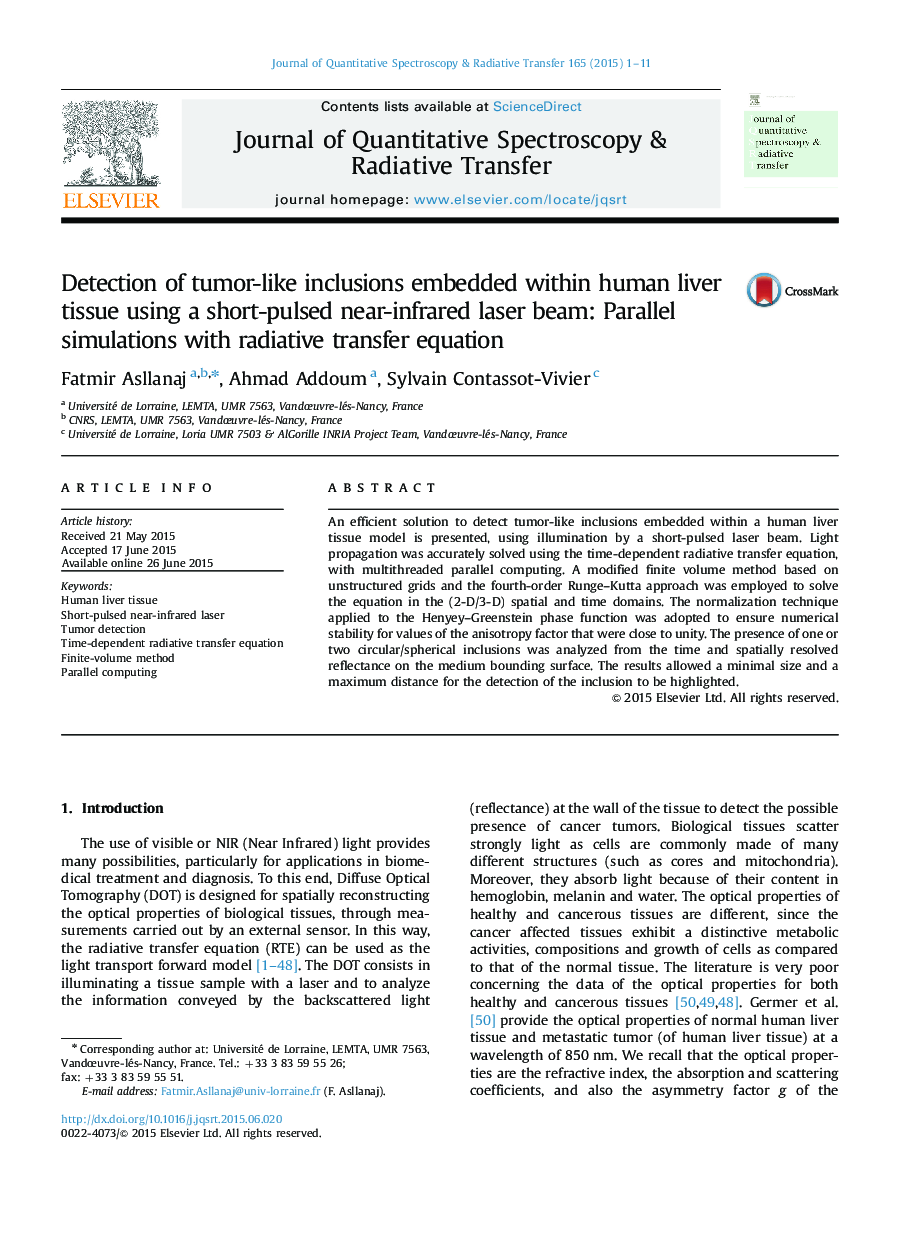| Article ID | Journal | Published Year | Pages | File Type |
|---|---|---|---|---|
| 5427944 | Journal of Quantitative Spectroscopy and Radiative Transfer | 2015 | 11 Pages |
â¢We detect tumor-like inclusions embedded within a (2D/3D) human liver tissue model.â¢The technique is based on a short-pulsed near-infrared laser beam.â¢We solve the (2D/3D) time-dependent RTE, with multithreaded parallel computing.â¢The presence of one or two circular/spherical inclusions is analyzed.â¢The results allows a minimal size and a maximum distance for the detection.
An efficient solution to detect tumor-like inclusions embedded within a human liver tissue model is presented, using illumination by a short-pulsed laser beam. Light propagation was accurately solved using the time-dependent radiative transfer equation, with multithreaded parallel computing. A modified finite volume method based on unstructured grids and the fourth-order Runge-Kutta approach was employed to solve the equation in the (2-D/3-D) spatial and time domains. The normalization technique applied to the Henyey-Greenstein phase function was adopted to ensure numerical stability for values of the anisotropy factor that were close to unity. The presence of one or two circular/spherical inclusions was analyzed from the time and spatially resolved reflectance on the medium bounding surface. The results allowed a minimal size and a maximum distance for the detection of the inclusion to be highlighted.
